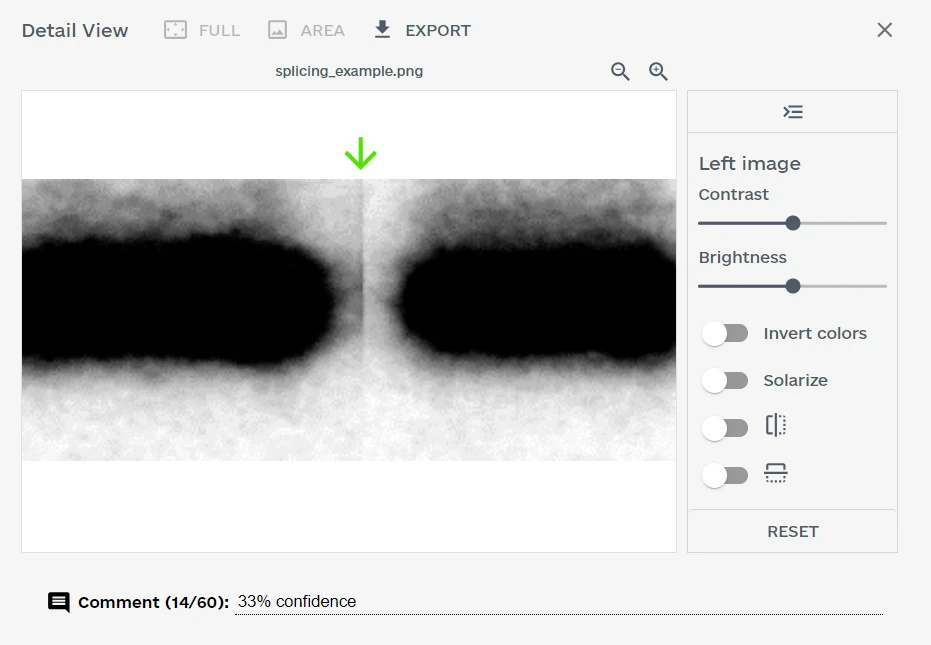Imagetwin now detects splicing seams in gel band images, such as western blots. A western blot consists of several lanes, whereas the procedure of removing, inserting, or re-assembling individual lanes is known as splicing. Splicing is not necessarily inappropriate behaviour, especially when declared. However, in some cases, splicing is used to manipulate the original image data, and it is critical to detect these cases. The splicing detection is accessible through our web application and the API, helping you to identify splicing seams quickly and effectively.
Forensics toolbar
Whenever a gel band image is input into our software, the image is screened for potential splicing seams. Findings are then presented in the web application with a score indicating how confident our machine learning model is in their prediction. A finding can be further investigated in the detail view using the new forensics toolbar. The forensics toolbar allows for altering the image, such as changing the brightness or the contrast. This helps to improve the visibility of details that are difficult to see by eye. The forensics toolbar might also be useful for other findings, such as improving visualizations of duplicates.

Detection accuracy
We evaluated the splicing detection algorithm in terms of accuracy and false positives. To measure accuracy, we tested the algorithm on 157 spliced western blots recently posted on PubPeer. The software correctly identified and located the splicing seams in 127 of the 157 images (81% accuracy). To measure the false positive rate, we applied the algorithm to 500 western blots randomly sampled from papers published from 2010 to 2023. In total, 15 of the 500 images were flagged, which we further analyzed. Of the 15 flagged images, 7 were actually spliced, 2 were incorrectly flagged as spliced, and 6 were low-quality images difficult to assess because of pixelated areas and compression artefacts (e.g., JPG).
| Data | Number of western blots |
|---|---|
| Spliced western blots sampled from PubPeer | 157 |
| Western blots sampled from publications from 2010 to 2023 | 500 |
